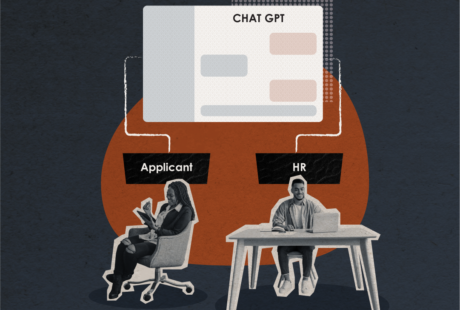Related:
Beyond Payroll: Human Resources’ New Strategic Edge
Once again we turn to our HR Consultant Judy Slutsky to get the latest on trends impacting human resources management in British Columbia and elsewhere. She shared thoughts and updates on artificial intelligence in recruiting, strategic HR, policy as a recruitment tool, contract workers, career development, compensation structuring, and misconduct investigations.
Artificial Intelligence in Recruiting and the Workplace
ChatGPT and other forms of artificial intelligence are impacting the way employees are recruited as well as the nature of their day-to-day tasks. According to Slutsky, candidates are using AI to craft their resumes while companies are utilizing it to assist with job descriptions and other writing tasks. While she acknowledges the tool can be helpful, she says that human oversight is still key.
“Companies will plug in job criteria and up pops a job posting with lots of information, but the person on the other end has to fundamentally understand the job and make edits before posting,” she says.1 “If you simply take it at face value, you’ll get pushed off course.”
There is much speculation about how artificial intelligence will transform the workplace. Indeed, some forward-thinking companies are already changing their processes to utilize the technology. Slutsky sees adaption as a slower process for most small and medium-sized companies.
“We’re not seeing the replacement of jobs, so much as higher expectations for technological capabilities,” she says. “Technology continuously changes the workforce, but it takes time. We still have call centres, after all.”
Organizational Development and Strategic HR
The role of HR continues to grow with the function being increasingly valued by the C-suite. As an HR consultant, Slutsky is typically brought in by the President of the company to assist with tasks that are central to the direction of the organization itself.
“The traditional focus of HR was administrative in nature,” says Slutsky,” but the years since Covid have escalated the movement toward a strategic focus.”
One factor in the shift was the importance placed on health and safety compliance. Another was a re-imagining of strategic direction and an acknowledgement that HR would be fundamental in achieving new goals.
“It’s not just about human resources,” says Slutsky. “It’s about the organization and how people relate within it.”

Policy as a Recruitment Tool
Company manuals are used to convey everything from holiday policies to company culture, but they have traditionally been kept private until after a hire is made. Slutsky says that this is changing.
“Companies are creating employee handbooks that make public some of the contents of the larger manual,” she says. “I’ve been part of that process three times already this year.”
According to the HR consultant, it’s a simple matter of marketing.
“Employees want to compare companies,” she says. “These handbooks discuss culture and the way things are done. It’s important to communicate these things to attract prospective employees.”
Will the Use of Contract Workers Keep Growing?
Contract and freelance workers are a major force in the labour market right now and, according to Slutsky, the pandemic is once again a factor. As Covid shook things up, organizations have seen their stable trajectories disrupted.
“Companies are now looking at new markets and new directions and are in need of new skills,” she says. “If they don’t have those skills internally, they can’t just release their entire workforce and start again. There are moral, ethical, and legislative barriers to that. As a result, staff are being supplemented with temporary contractors.”
Slutsky explains that these types of shifts are often experienced in waves. She expects there to be some levelling off of short-term contractor utilization in the future.
“Employers don’t want a large payroll budget unless they know that revenue is coming in, so they test the waters with contract workers” she explains. “Eventually they’ll want the consistency that comes with internal teams.”
Career Development a Major Retention Factor
“Job progression is one of the key reasons people stay or leave a company,” says Slutsky. “I’m often called to look at organizational charts and company structure.”
Small and medium-sized organizations may have a large ceiling but often find themselves lacking in available high-level positions at any given time. As a result, they risk losing talented individuals, to the detriment of the organization. Slutsky urges companies to think creatively.
“There are all kinds of ways to give somebody new skills and inject interest at work,” she says. “Professional development or assigning project work are great ways to retain ambitious employees.”
Compensation, Job Evaluation, and Misconduct Investigation
As an HR consultant, Slutsky finds herself busy on a number of fronts. As we discussed in our previous HR update, companies are increasingly formalizing their pay rates in order to remain competitive.
Slutsky reports that employees continue to re-evaluate their jobs and careers, leading to movement in the marketplace. As a result, it’s critical for companies to assign the correct compensation for positions.
“It’s a matter of benchmarking and ensuring that you remain competitive in terms of total rewards,” she says. “This evaluation has to be both external and internal.”
Slutsky also frequently finds herself handling investigations of alleged misconduct within organizations.
“Policies that define bullying, harassment, diversity, and inclusion are increasingly specific, but employees haven’t always caught up with the lingo and standards of what’s reasonable and unreasonable,” she says. “It’s a complicated workplace and we all have to navigate it.”
Cited Sources
1 Direct communication with HR Consultant Judy Slutsky




